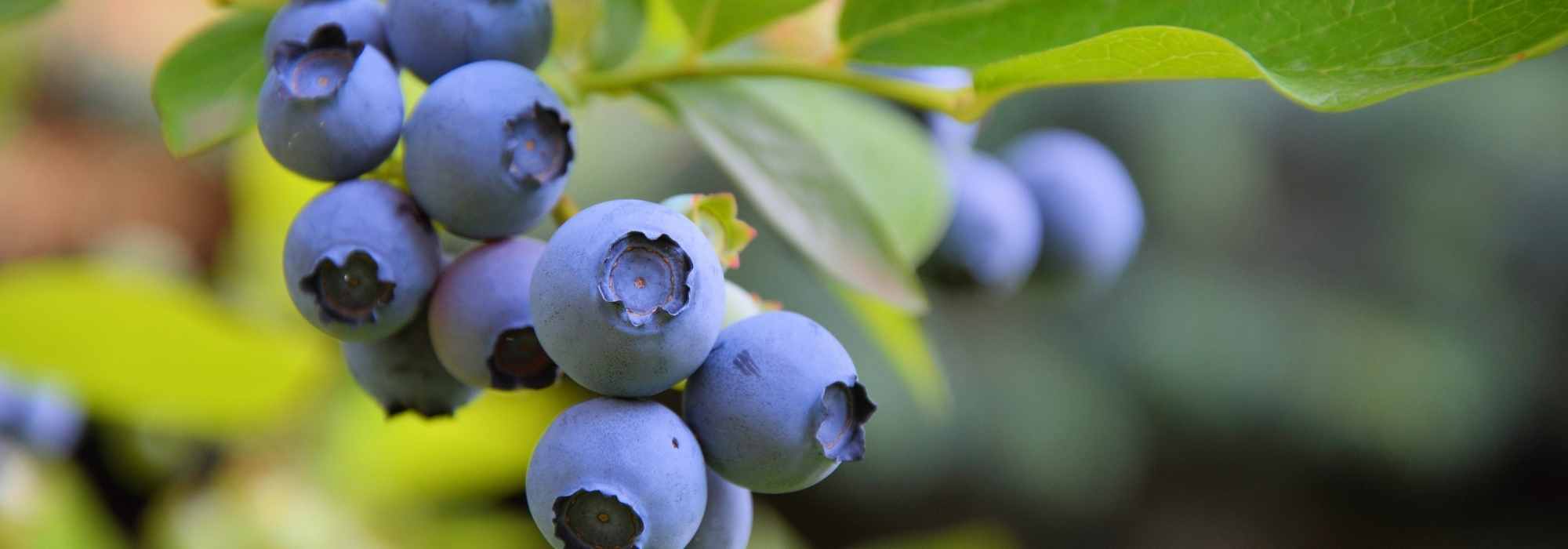
Choosing blueberry varieties
Our buyer's guide to choose blueberries
Contents
Native to montane regions, blueberries, or Vaccinium corymbosum by their Latin name, are shrubs of the Ericaceae family. This classification also includes bilberries and cranberries (Vaccinium myrtillus and Vaccinium macrocarpon). Their berries, blueberries of a lovely violet-blue — also called bleuets in Quebec or brimbelle when referring to wild bilberry — or red in bilberries and cranberries, are among the delicious small fruits eaten in summer, raw or more often cooked.
Less common in our gardens than raspberry or redcurrant because considered difficult to grow, they nevertheless deserve a prime place for enjoying their incredible culinary variations: jams, syrups, tarts, sorbets, mulled wines, liqueurs, and also as an accompaniment to savoury dishes. This fruit is packed with vitamin C, polyphenols and flavonoids, has anti-inflammatory and above all antioxidant properties, strengthens capillary resistance, is anti-ulcerogenic, improves night vision…. By giving your blueberry bushes a semi-shaded spot and slightly acidic, consistently moist soil, you will enjoy all their benefits, as well as a handsome bush with delightful flowering and magnificent autumn foliage turning red for Vaccinium corymbosum. Remaining modest in size, it makes an excellent choice for small gardens, where it can even be grown in a pot.
Our buying guide advises on finding the best variety and helps you get to know this marvellous bush whose fruits are full of culinary promise!
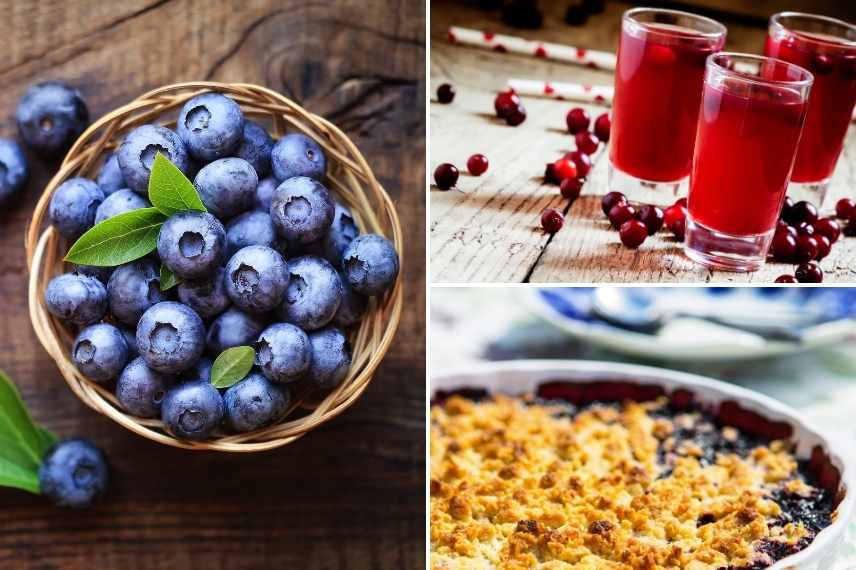
Fresh blueberries to enjoy, cranberry juice, incomparable blueberry tart…. let yourself be tempted by blueberry bushes !
Depending on the pruning of the bush
Size of blueberry bushes matters if you want to integrate them into a border, or if you plant them under shade of larger bushes.
Vaccinium corymbosum reaches between 1 m and 4 m in its native medium, Vaccinium myrtillus (bilberry) remains a stockier shrub up to 60 cm tall. Cultivated varieties you will plant in garden are hybrids of Vaccinium corymbosum: these American blueberry bushes have a spreading habit with erect shoots. Of slow growth, these blueberry bushes generally reach between 1.30 and 1.50 m with a spread of 1 m to 2 m.
Among larger varieties, ’Patriot’ can grow up to 2 m and ‘Bluecrop’ with a bushier habit up to 2.30 m. Smallest for containers or small gardens: ‘Bluetta’, ‘Yellow! Berryblue®’, as well as bilberries and cranberries, which remain ultra-compact.
Bear in mind that blueberry bushes do not like being moved, so choose planting location carefully. With lifespan of nearly 50 years, you can integrate them either into borders of ericaceous plants, or in groups to ensure good fruiting.
Read also
Growing blueberriesDepending on your soil
Blueberry bush dislikes dry, calcareous soils. Soil pH should ideally be 5.5 or lower. That said, important to keep soil cool in summer, with a free-draining substrate because it dislikes stagnant moisture in winter. Incorporating turf at planting is advisable. As blueberry’s shallow roots need acidity, it is important to acidify your soil on the surface using resinous chips as mulch, or a mix of grass clippings, needles and pine twigs, which you will bury after a year. To improve and lighten your soil, add humus, for example with a leaf mould, and well-rotted compost. Water, if possible, with rainwater.
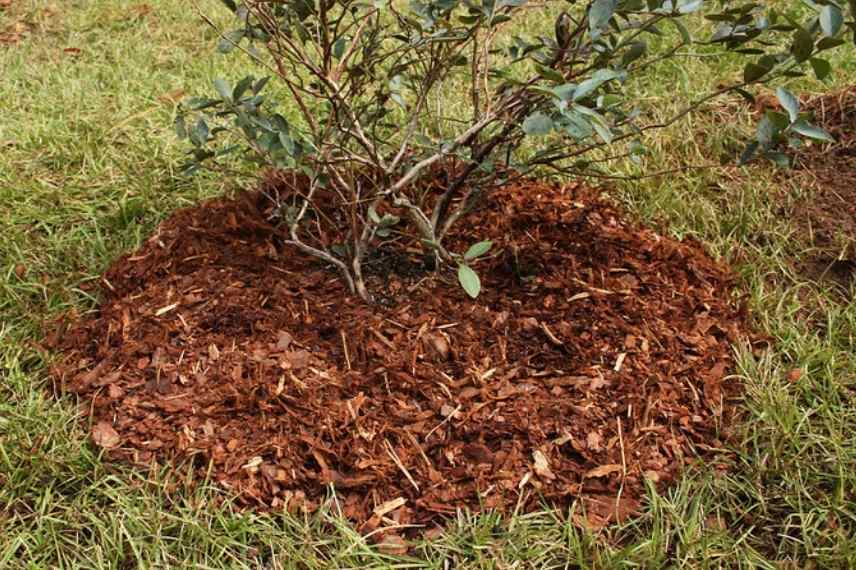
A blueberry planted with a good pine bark mulch
Discover other Blueberry bush
View all →Available in 0 sizes
Available in 1 sizes
Available in 1 sizes
Available in 1 sizes
Available in 1 sizes
Available in 2 sizes
Available in 2 sizes
Available in 1 sizes
Available in 3 sizes
Available in 1 sizes
By fruit colour
Vacciniums corymbosum all bear bluish fruits covered with bloom, while lingonberries and cranberries bear red berries. This beautiful blue colour is due to anthocyanins concentrated in the fruit’s skin: this pigment, also found in other fruits such as grapes or cherries, is a powerful antioxidant.
An unusual cultivar, ‘Pink Lemonade’, bears surprisingly pink fruits: it has a sweet, very mild flavour.

Blueberry ‘Patriot’, Blueberry ‘Pink Lemonade’, Cranberry
Read also
Planting young fruitsDepending on its size
These American cultivars produce the largest berries. ‘Bluecrop’, one of the oldest cultivars, produces large dark-blue berries. ‘Powder blue’, ’Brigitta’, ’Patriot’, ‘Spartan’, ‘Yellow! Berryblue®’, ‘Berkerley’, ‘Ivanhoe’ and ‘Chandler’ are among the varieties offering the largest berries.
Small-fruited varieties such as ‘Goldtraube’ of European origin have a flavour close to wild blueberry.
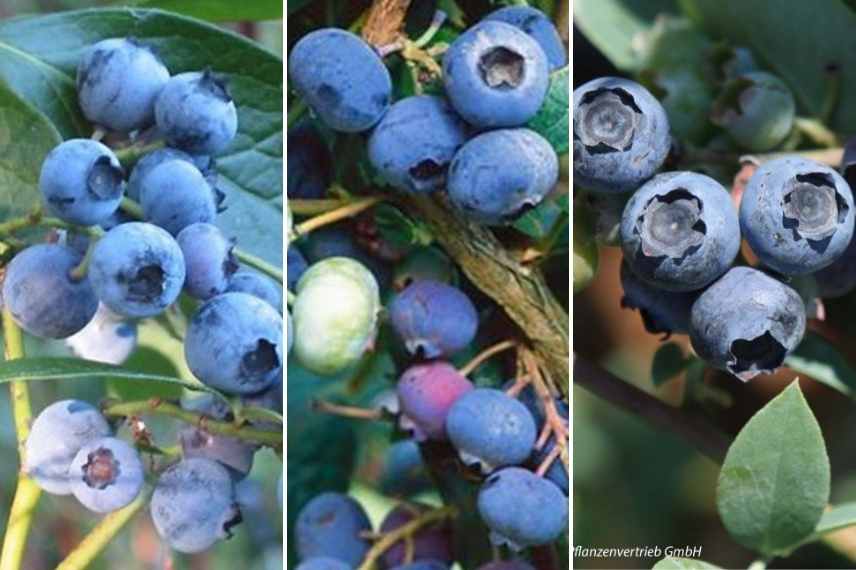
Among the large berries: ‘Bluecrop’, ‘Brigitta’ and ‘Powder blue’
Depending on the harvest period
Blueberry harvest is late in summer, often from August to September. Some varieties, however, are much earlier, starting in late June and sometimes continuing until October. Timing also depends on climate and your region. Enjoy staggering production by planting different varieties to aid good pollination.
- Early varieties (from late June): ‘Collins’ and ‘Stanley,’ then ‘Polaris’, ‘Duke’, ’Patriot’ ‘Estive’ and ‘Bluetta’
- Mid-early varieties (July): ‘Bluecrop’ (one of the oldest cultivars introduced in France, notable for slow, regular production, harvest stretching from July to early September), ’Berkeley’, ‘Reka’, ’Atlantic’, ‘Flamingo’, ’Pemberton’ and ‘Dixi’
- Late varieties (from August): ‘Rubel’, ‘Jersey’, ‘Berlington’, and ‘Darrow’ in September, ‘Sunshine Blue’ and ‘Powder blue’ in September–October
Lingonberries and cranberries are harvested later: September through November for cranberry ‘Pilgrim’.
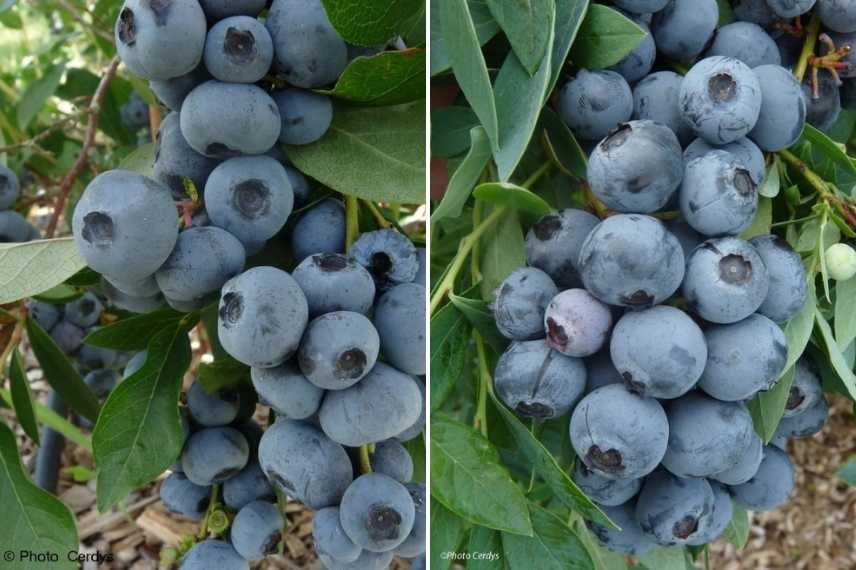
Blueberry bush ‘Patriot’, particularly early, and ‘Sunshine Blue’, late
Depending on exposure
For these mountain bushes, one rule to remember: blueberries are sensitive to full sun and intense heat… but they absolutely need some to ensure good fruiting. They should therefore be planted in partial shade in most regions. That means morning sun is ideal, and full sun in early afternoon should be avoided. In southern parts of the country, a shadier position is recommended. These recommendations apply to cultivated blueberry (American hybrids), not wild blueberry, which prefers shade.

Blueberries prefer partial shade or sunny positions in northern parts of the country
Depending on yield
Major advantage of blueberry bushes is that their production lasts about 40 years! Young plants only provide a good harvest after around 4 years, so be patient… and plant a few slightly more mature plants (2 years old) to enjoy a harvest as early as the following year.
Among particularly vigorous and productive varieties, we recommend ‘Atlantic’, ‘Brigitta’, ‘Patriot’, ‘Ivanhoe’, ‘Goldtraube’, ‘Spartan’ and ‘Bluecrop’.
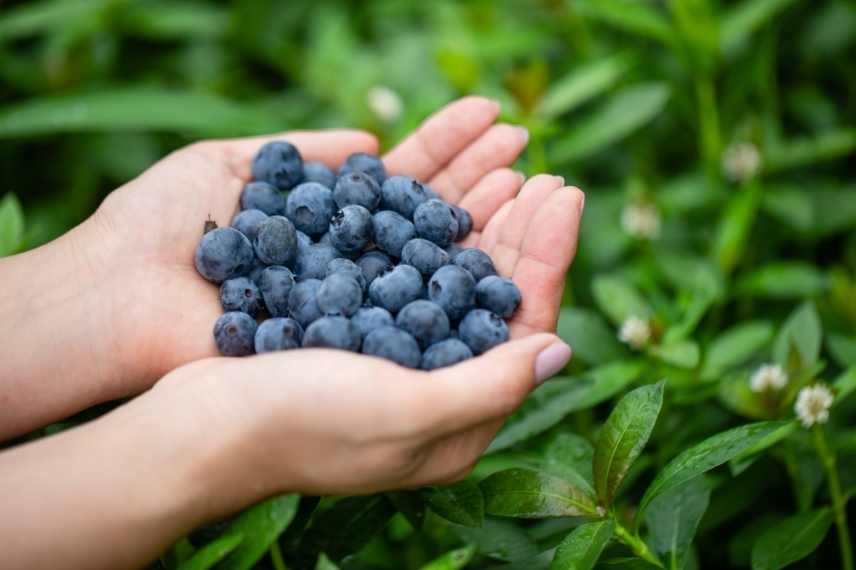
Depending on its hardiness
Blueberry bushes easily tolerate down to -25°C, but their very fine root system is particularly sensitive to drought. ’Patriot’ is ultra hardy, surviving down to -40°C, ‘Jersey’ and ‘Bluecrop’ also cope well in very cold climates.
Note that resistance to cold and acidic soils is often greater in larger-fruited types (V. Corymbosum) than in wild or smaller-fruited blueberry bushes.
Depending on the flavour of the fruits
It should be noted that American blueberries have a less pronounced flavour than the European wild bilberry. When it comes to taste, personal preference plays a large part, but one can distinguish flavours that are more or less tangy and sweet.
Variety ‘Estive’ is one of those that most closely resembles the wild bilberry, fruity and tangy, as do ‘Goldtraube’ and ‘Flamingo’, as well as ‘Emil’ and ‘Darrow’, which prove very flavoursome and sweet. ‘Jersey’ and ‘Bluecrop’ have a slightly sharp, particularly appreciated tang.
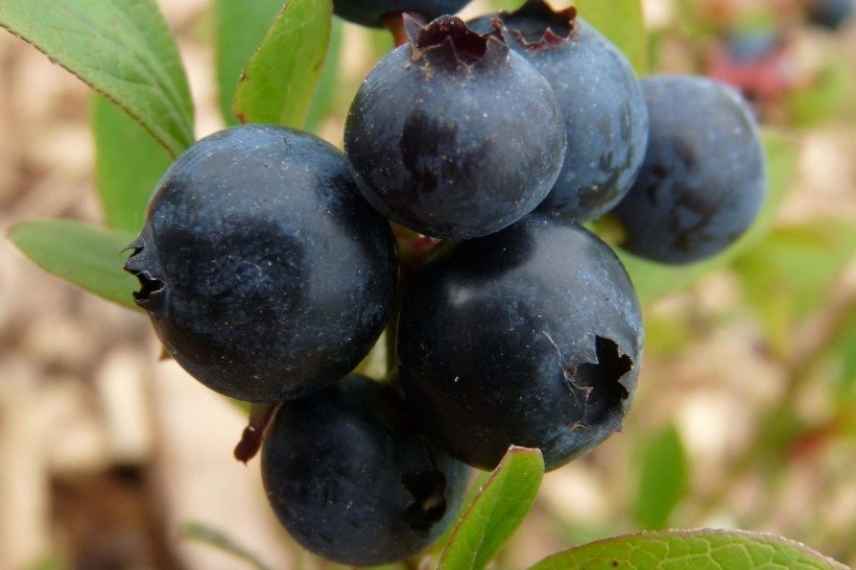
Emil blueberries have a good wild bilberry flavour (© Cerdys)
Find out more
Discover a very useful video by Olivier on planting blueberry bushes
- Subscribe!
- Contents
































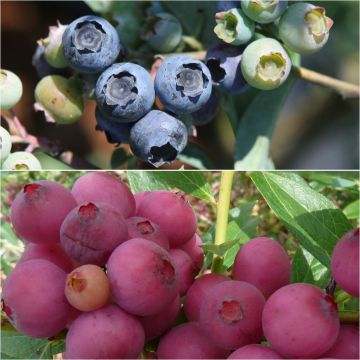

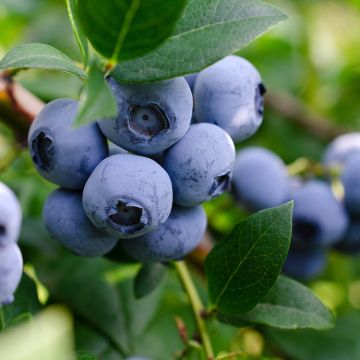
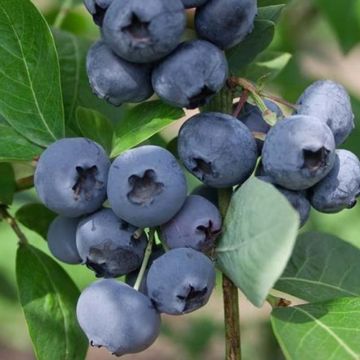
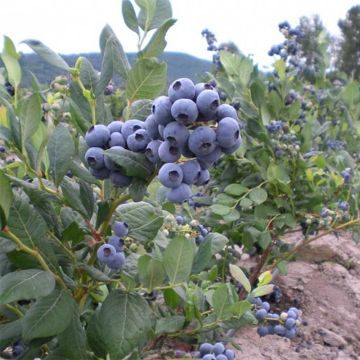

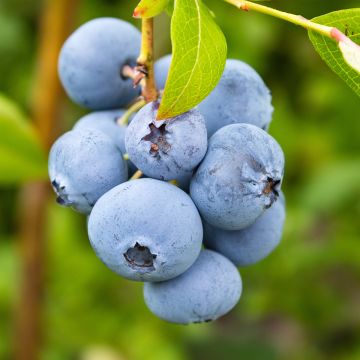
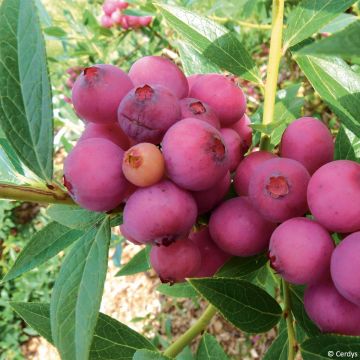
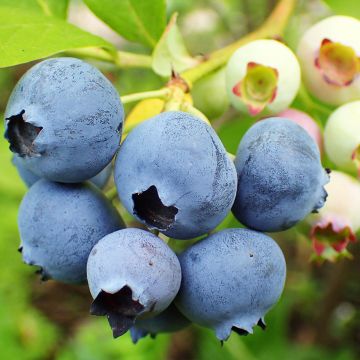
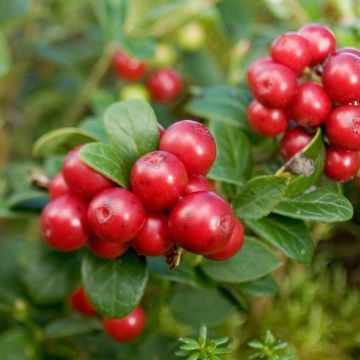
Comments